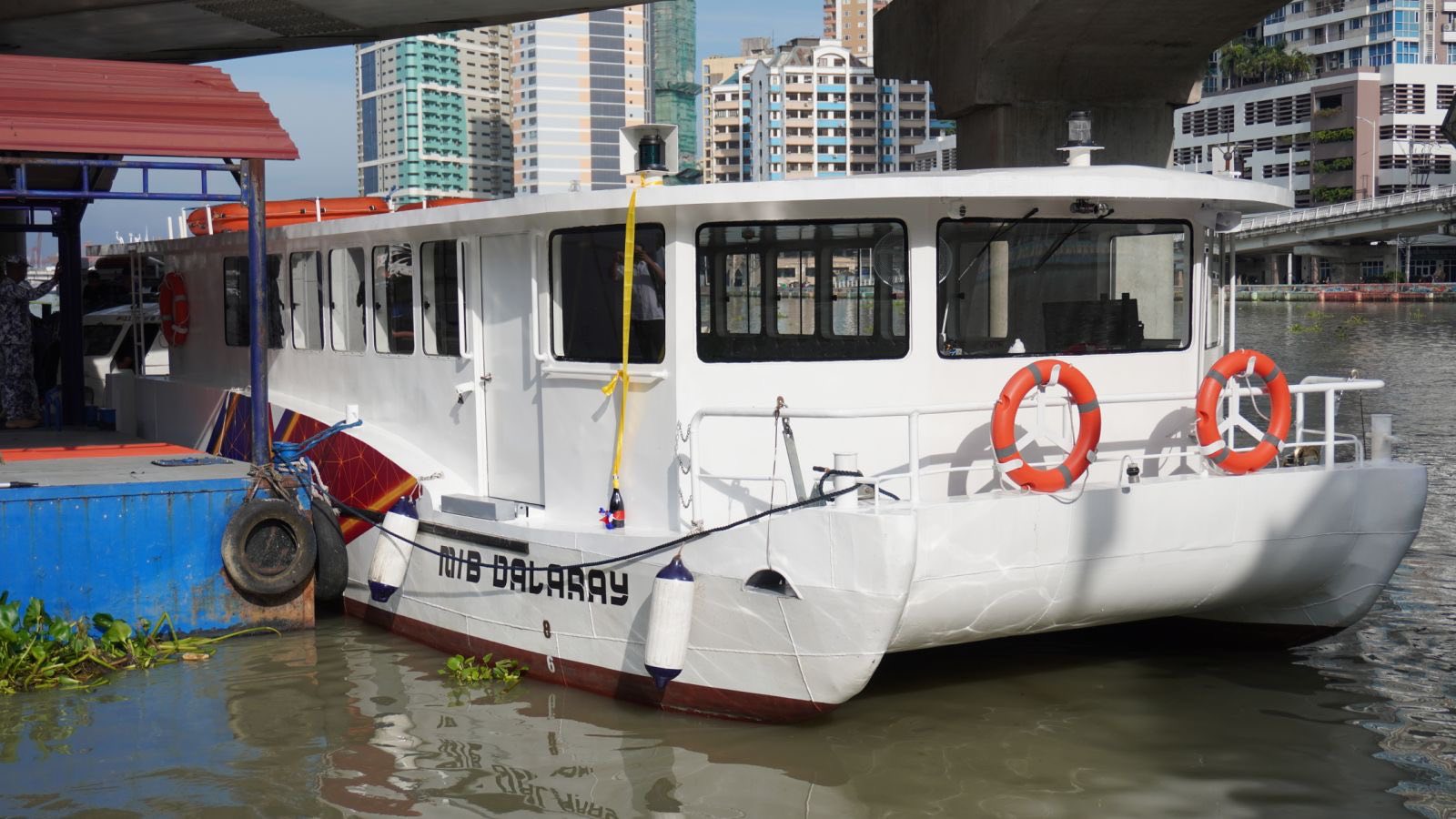
By Brian Campued
Commuting through and across the Pasig River will soon become more convenient and more sustainable with the launch of a new ferryboat powered by an electric battery and solar energy.
Named M/B Dalaray, which means “flow” or “current”, is the country’s first locally developed electric passenger ferry designed to transport commuters through inland waterways.
The project was developed by the University of the Philippines’ Electrical and Electronics Engineering Institute in collaboration with the Maritime Industry Authority (MARINA) and funded by the Department of Science and Technology (DOST) – Philippine Council for Industry, Energy and Emerging Technology Research and Development.
The new e-ferry will begin operations in November through the Pasig River Ferry System operated by the Metropolitan Manila Development Authority (MMDA), traversing the cities of Pasig, Makati, Mandaluyong, Taguig, and Manila.
It is likewise capable of carrying up to 40 passengers and three crew members for up to three hours.
According to the DOST, the ferry can be charged at various solar-powered charging stations to be set up along the Pasig River.
DOST Sec. Renato Solidum Jr. said the e-ferry is expected to help address traffic congestion in Metro Manila and reduce the country’s dependence on fuel.
“Merong pang-ekonomiya, merong pang-kalasugan kasi ‘yong mga paggamit ng mga diesel ay nakakasama sa ating hangin at masama sa ating kalusugan. At siyempre pagtulong sa pagpigil ng pagdami ng carbon dioxide sa ating hangin,” Solidum said during the launch of the e-ferry in Plaza Mexico in Escolta, Manila on Monday.
The DOST chief added that the e-ferry system may also serve as an alternative means of transportation in times of disasters, particularly if a powerful earthquake jolts Metro Manila.
“[Noong] 2004, sinabi na namin na kailangang magkaroon ng transport system along the Pasig River and across the Laguna Lake kasi nga ‘yung tulong na manggagaling sa eastern side ng Pilipinas ay puwedeng manggaling sa south ‘no dahil ‘yung mga kalsada ay puwedeng maapektuhan sa mga unang araw o linggo pagkatapos ng lindol,” Solidum said. (with report from Rod Lagusad / PTV News)
-jpv
